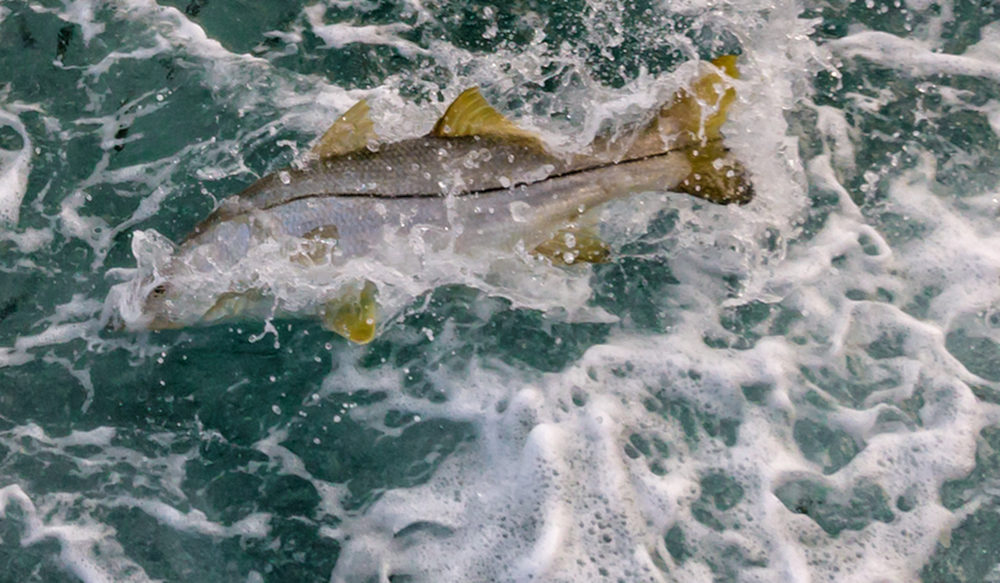Fishing resources and tips for the empowered female angler.
5 Signs That You Have Found Fish
January 3, 2013

Not sure which signs might indicate that you have found fish? It’s actually pretty simple, so no need to be confused about what to hone in on when you venture out into the Gulf or any other large body of water for that matter. If you pay attention to these signs, chances are pretty darn good that you’ve found the fish.
Baitfish
There’s no rocket science going on here. Big fish eat little fish… period. This is part of the circle of life. Put on your polarized sunglasses and keep your eyes on the surface of the water. If you are observant enough, you may notice a commotion on the surface of the water, which usually indicates that there is a school of baitfish present. If you have a cast net, now might be a good time to throw it. If not, toss a lure out right into the middle of the baitfish school, then just wait to see what happens. There is a high probability that you have found fish if you can locate the baitfish.
Birds
You might have a slight phobia since Alfred Hitchcock’s corny thriller of the same name, but just realize that the birds are looking for fish — just like you are. If you see them hovering or diving at the surface of the water in a specific area, take this as a sign of baitfish activity.
Structure
Where you find structure, there will be fish. Focus on saltwater spots like mangrove islands, dock pilings, potholes and grass flats. If fishing freshwater spots, hone in on drop-offs, ledges, downed trees, rock piles and bridges. Fish like structure for multiple reasons. First, structure provides hiding places and ambush areas for predatory game fish. Second, structure will attract baitfish and other types of prey for game fish.
Strikes
It might take you a little while to learn the difference between the sound of a mullet flopping and a fish striking on the surface. To a well-trained angler’s ear, however, there is a distinct difference. The strike (sound of a fish inhaling its prey) is more purposeful, while a fish jumping or other splashes usually sound more like a lazy plop. It’s like the difference between dropping a watermelon in the pool versus giving the last bit of water in your bathtub getting “slurped” down the drain. When you hear or see the strike, you know the fish are feeding.
Pushes
If you have schools of fish on the move, chasing a meal near the surface, you will see the movement. You can tell the difference between this and the normal movement of the water from tides and currents, because it looks more like a push of water. It’s the same sort of difference you see between sitting down in the bathtub and moving your forearm across the top of your bubble bath. You’ll may notice these pushes of water more when fishing inshore areas versus in offshore fishing situations, but it does happen in both types of environments. What’s the bottom line? These pushes of water are yet another sign that you have found fish.
As long as you are observant, you shouldn’t have any problem identifying these situations that mean you have found fish. Of course, now that you have found the fish, you will need to think about which saltwater or freshwater baits will work best.